Atrium Health David L. Conlan Center at Carolinas Rehabilitation
NBBJ completed the Atrium Health David L. Conlan Center at Carolinas Rehabilitation for patients in Charlotte, North Carolina.
Nestled along Little Sugar Creek Greenway in Charlotte, the design of Atrium Health’s 72-bed Rehabilitation Hospital focuses on physically and emotionally rebuilding human performance. By personalizing the rehab journey and prioritizing accessibility and maneuverability, the building sinuously connects people to empowering experiences within the facility’s program while supporting patient dignity.
The new hospital grew out of the need to modernize the outdated 1950s-era facility and enable staff to increase the impact of their nationally recognized care, enhance the patient experience and create an identity for the program. Intensive stakeholder engagement sessions occurred during pre-design efforts and included hosting Lean P3 events, shadowing staff and spearheading an in-depth experience design effort. This led to design guides and experience checklists that identified key priorities for staff, patients and families. These design toolkits focused on items such as facilitating independency and normalcy, prioritizing safety, inspiring hope and healing, and supporting the family’s journey to create a welcoming experience and streamline discharge.
Many major architectural and design decisions used these frameworks to shape the building and guide the collective team with fiscal decisions. For instance, the open care inpatient floor configuration makes the space feel more open and comfortable than a typical 8’-0” corridor. Glass patient doors drive natural light and views of greenery into the corridor, celebrating the calming power of nature not just for patients but for staff as well. Within the open core, sightlines to all staff and patients maximize safety and visibility, promoting collaboration and team-based care while also making supplies and medications easily accessible to clinical staff without impeding on Atrium’s high care standards. In addition, the central care team station allows for complete visibility of both wings. Visible to and from the respite areas with wide spans of glass, it also allows patients to connect with nature.
To build hope and wellness, the project unites design, environmental graphics and curated art that inspire, empathize and empower, encouraging patients to live without barriers. Through the design, the project:
- Employs design as a tool for healing: The uplifting contour motif repeated throughout—from gypsum reveals in all double height spaces to the distance markers outside each patient rooms’ entry—acts as a poetic expression of movement, personal progress, and forward strides made each day in the journey towards rehabilitation. Furthermore, recognizing the healing benefits of green space, 95% of all occupied staff and patient spaces on the inpatient floors have access to natural light and views of nature.
- Empathizes with the new normal: Circulation, waiting and community spaces were designed with intentional openness, allowing all users to feel welcome. Wider doorways, radiused corners and flush floor transitions increase maneuverability for patients and enable independence. To normalize interactions, reception desks and seated tables were designed for both forward and side approaches, as well as lower accessible transaction tops to enable eye level communication.
- Uplifts through color and art: A deep dive into the psychology of color led the design team to deploy active colors like oranges and yellows within group therapy spaces, while calming and healing saturations of blues, teals and greens were used across inpatient floors. Furthermore, artwork created by talented minority, disabled and regional artists—including original pieces by mouth and foot painting artists—was thoughtfully integrated into all spaces to foster connections, create visual landmarking and provide soothing distractions.
Design: NBBJ
Photography: Nick McGinn

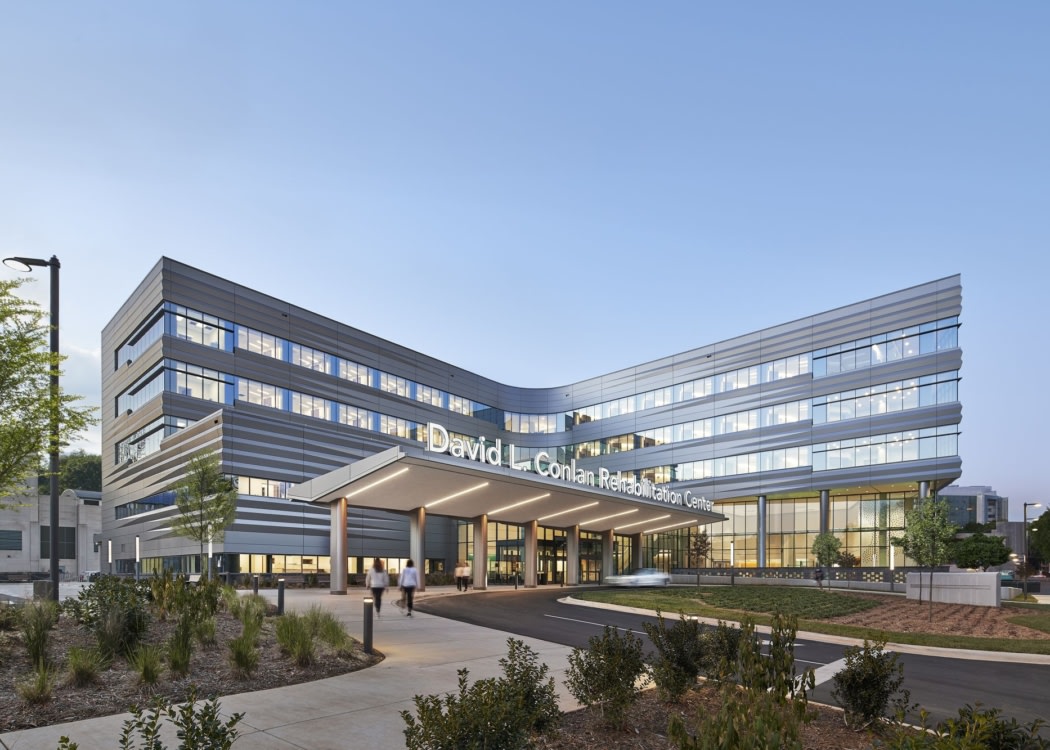
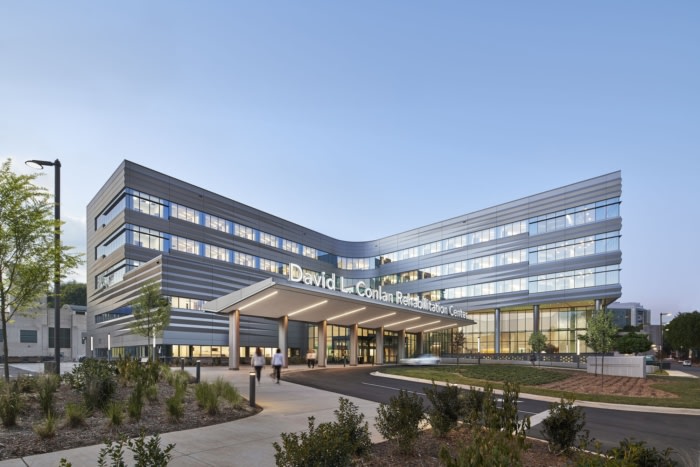


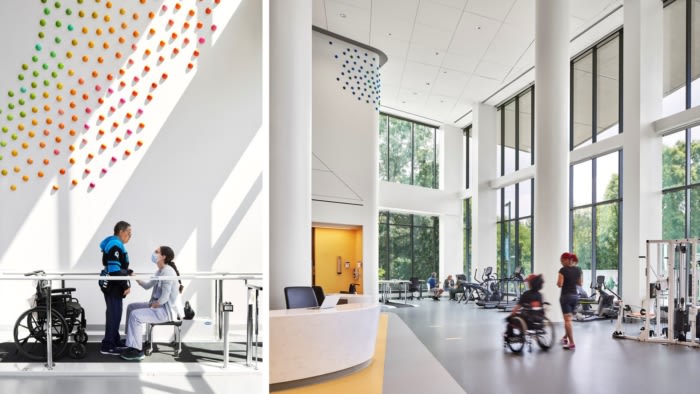
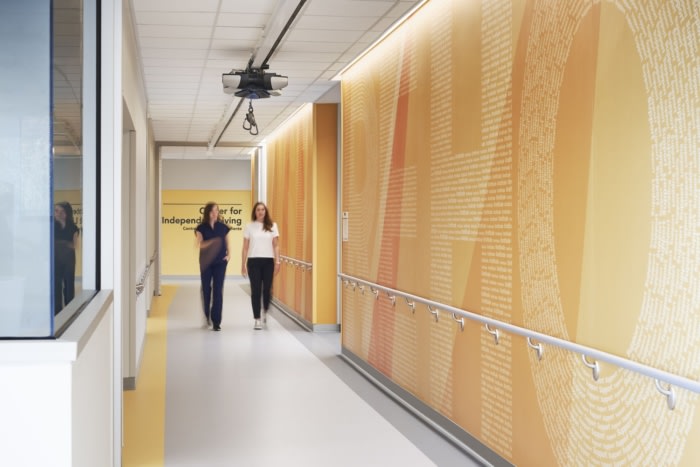
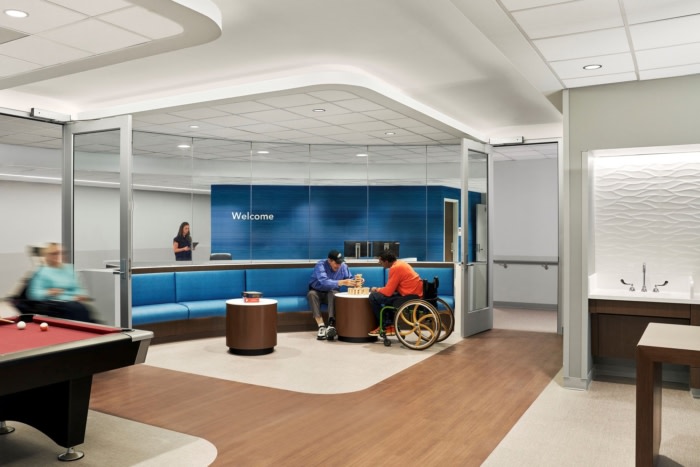


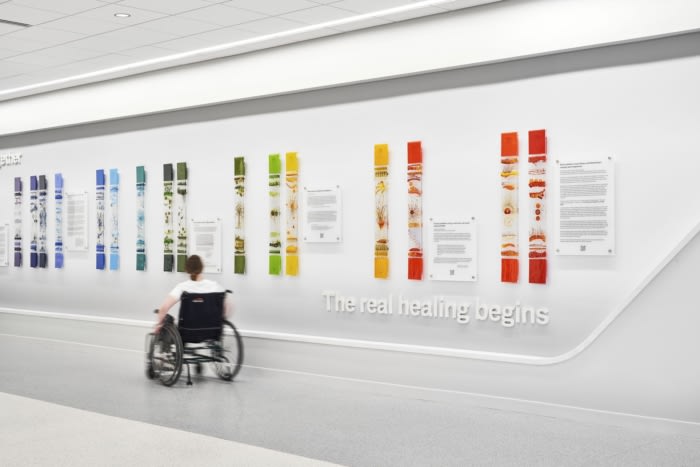
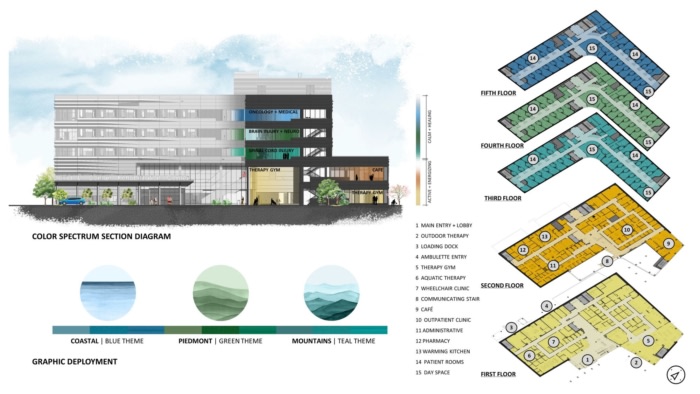


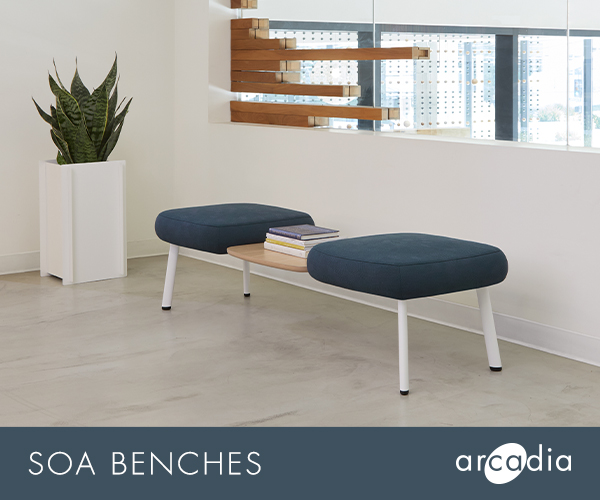

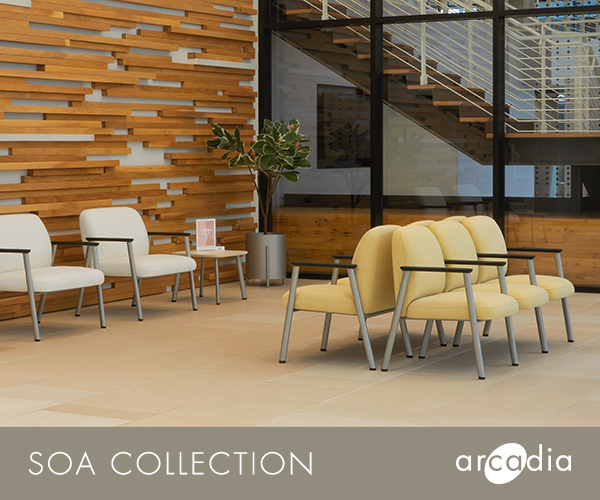






Now editing content for LinkedIn.